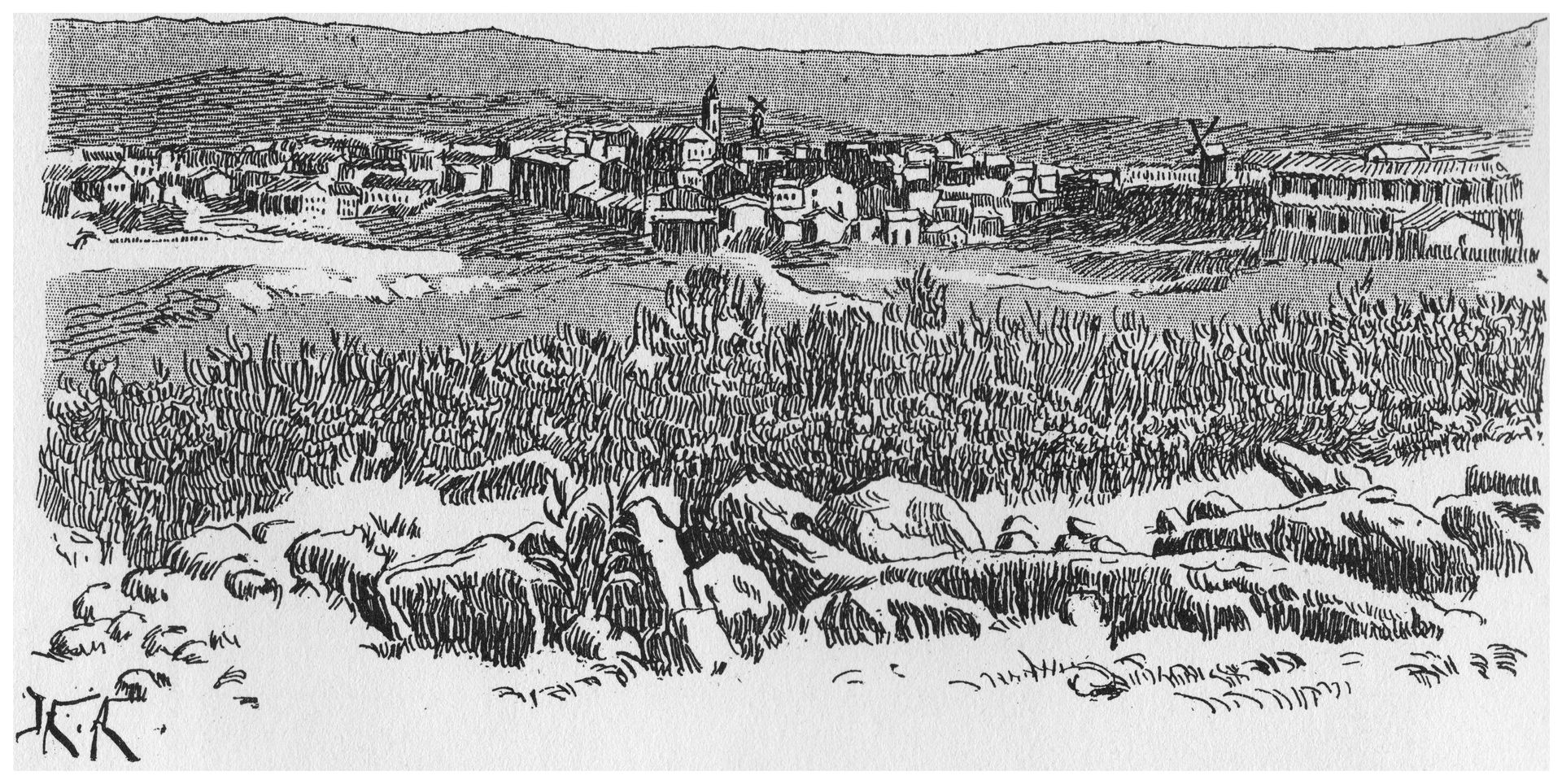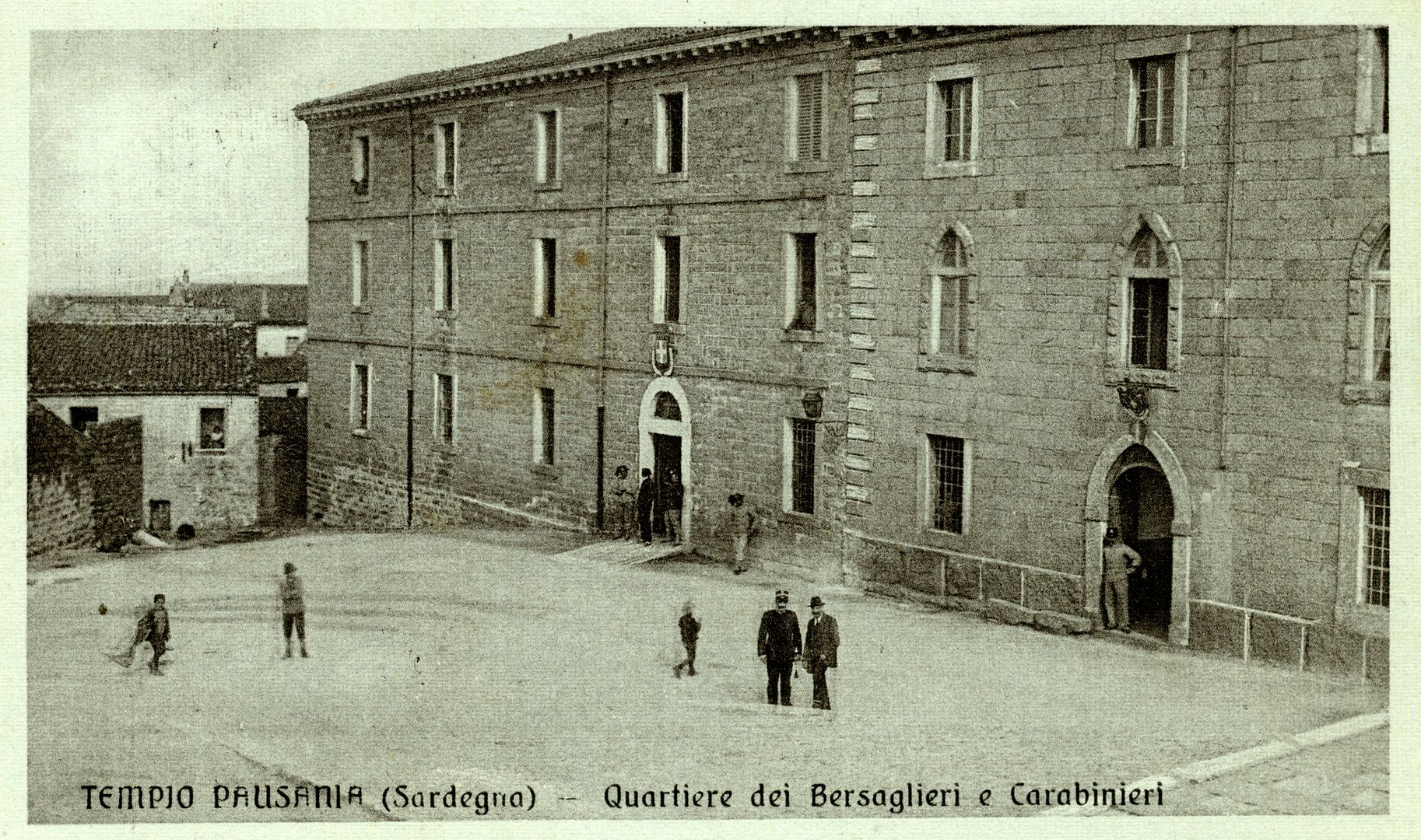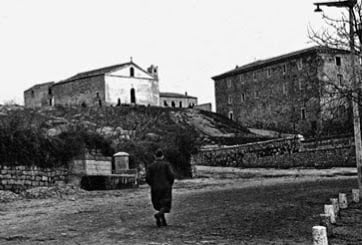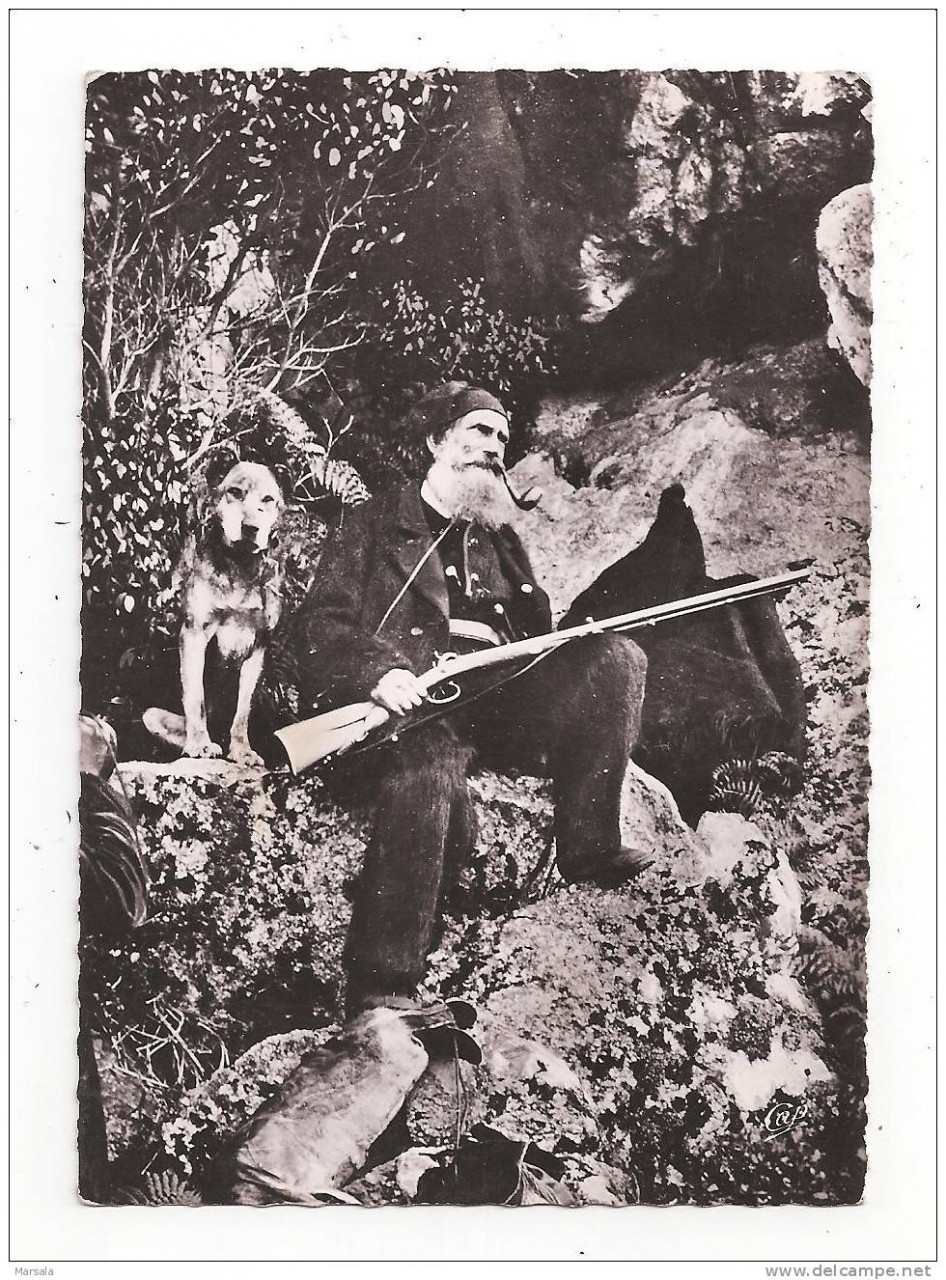TEMPIO PAUSANIA
by George Burdett
Traits of Corsican and Sardinian Character
in «The New Monthly Magazine and Humorist»
London, January – February 1845
Tempio [corrige Sempio] is one of the healthiest towns in Sardinia. Lying in the midst of vast plains, which are bounded by mountains, thrown into every variety of form, its site is lovely, but the enchantment vanishes on a nearer approach, as every thing that is most offensive to the sight and smell, really stupifies you at every corner of the streets.
At the inn where I put up, I could only secure a joint interest in a double-bedded room with a Sardinian professor of law, who was enjoying his vacation at Sempio, his native place.
This worthy legalist, in other respects a very good chum, was dreadful in his snoring. It sounded as though the concentrated essence of fifty years’ study was proceeding from his brain through his nostrils, so great was the effect produced; and worse than that, the noise was carried on at the same time in a squeaking treble and a bass, that resembled the grunting of an Hyrcanian wild boar.
I wish the worthy professor had undergone a little Winchester shoeing in his earlier days; it is a capital recipe for seraglio sleep, as I understand that all the Circassians that are sold into the sultan’s harem are warranted not to snore.
We used also to dine together regularly every day at twelve o’clock, the only time in the twenty-four hours allowed for refection by Signor Aruna. He told me that he had not had the intemporie for forty years, and I think his abstinence was the secret of his good health.
The lions of Tempio are grim enough to deter travellers from sight-seeing: A flight of stone steps leading up to a small church near the barracks of the Cavalli Leggieri was amongst the most interesting to me, on account of an equestrian feat connected with them: the steps are twelve in number, and about ten inches high by eight wide.
There are horse-races in Tempio, as well as in most of the Sardish towns and villages, twice a-year. At one of these meetings, a defeated rider was passing by the church, which is a short distance from the race-course; maddened at the thought of his bad fortune, and at the shouting of the people, who cheered his triumphant rival, he plunged his spurs into the flanks of his gallant horse, who at one bound cleared the whole flight of steps from the top to the piazza below, without injury or his rider.
The conversation of the Tempians turned a good deal on an expedition of light horse which had been sent, a few days before my coming, against the people of Argozoli, a village three days’ journey from Sempio. The inhabitants of Argozoli enjoy the reputation of being the most desperate ruffians in Sardinia; the sight of a new pair of shoes being a sufficient inducement to them to waylay and murder travellers.
They have a breed of dogs, not of very large size, but of extraordinary courage and ferocity, which set on by their inhuman masters, attack and devour strangers, and the men of Argozoli are even accused of sharing these horrid meals.
The women of Sempio are remarkable for their beauty, which the custom of the country, founded probably on the Oriental jealousy of their ancestors, obliges them to conceal by a fold of linen reaching to the eyes.
On festivals the Sempian women wear a scarlet bodice, with slashed sleeves, and filagree silver buttons; a scarlet petticoat was for-merly de rigueur, which of late years, however, has fallen into disuse, green being now the favourite hue.
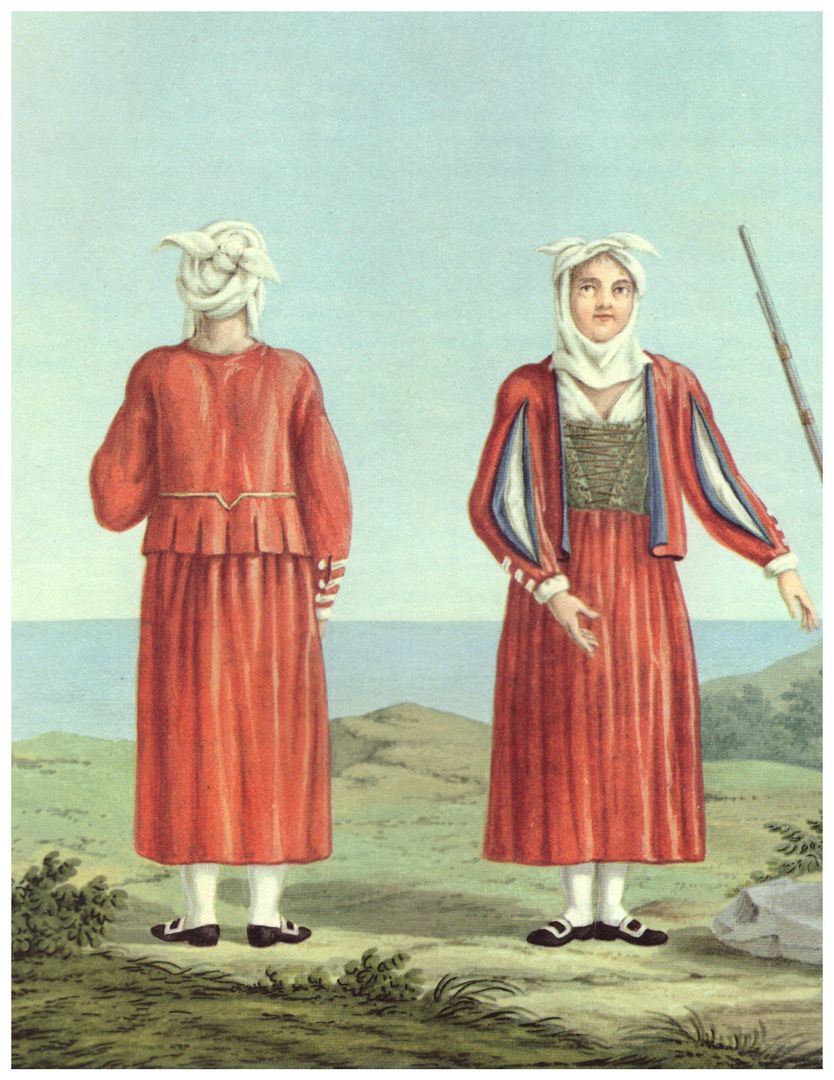
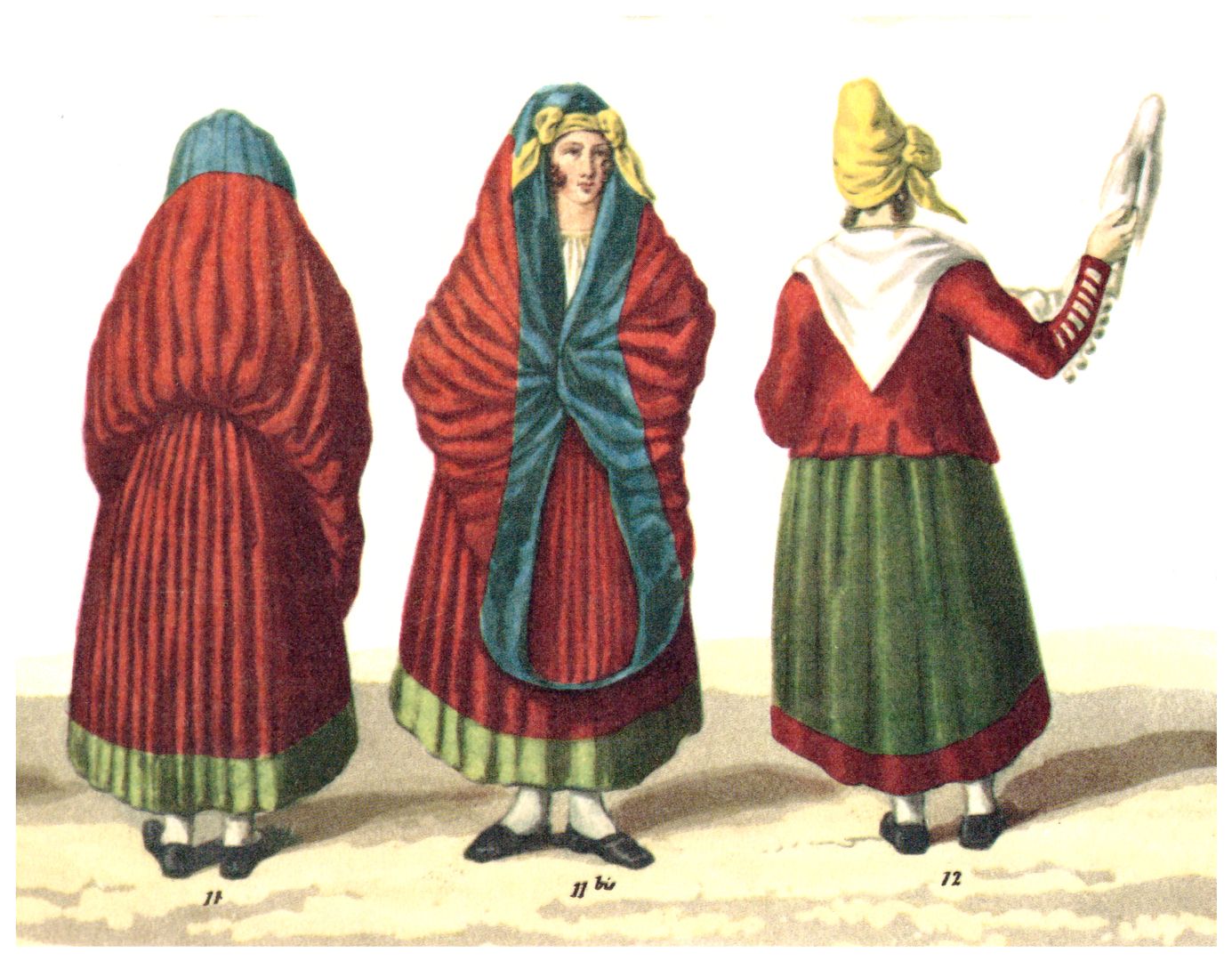
SOURCES OF THE ILLUSTRATIONS
19th century drawings, paintings and lithographs
Henri Louis Avelot, Tempio, ca 1894 -1902, IN Marius Bernard, Autour de la Mediterranée. L’Italie. (De Ventimille à Venise), Paris, ed. Henri Laurens, 1894-1902.
Agostino Verani, Women of Tempio, 1806-1815
Postcards and Photos, Late 19th/Early 20th Century
coll. Giovanni Gelsomino, Gian Franco Serafino, Vittorio Ruggero – Tempio
Contemporary Photos
Antonio Concas – Flickr; Aurelio Candido – Flickr
© ALL RIGHTS RESERVED

